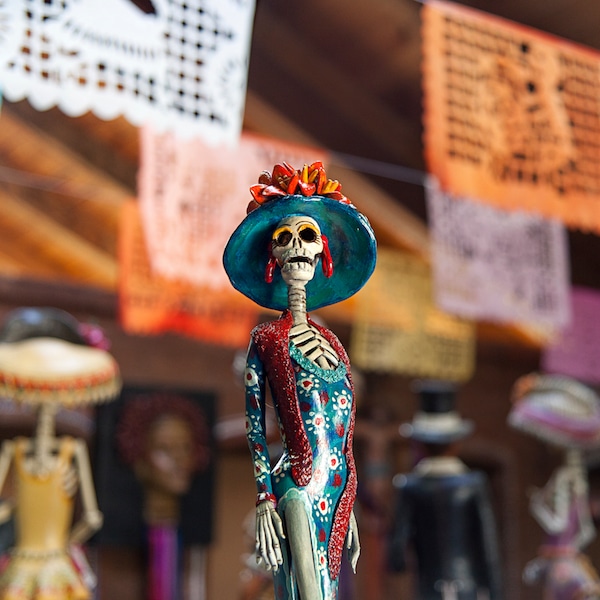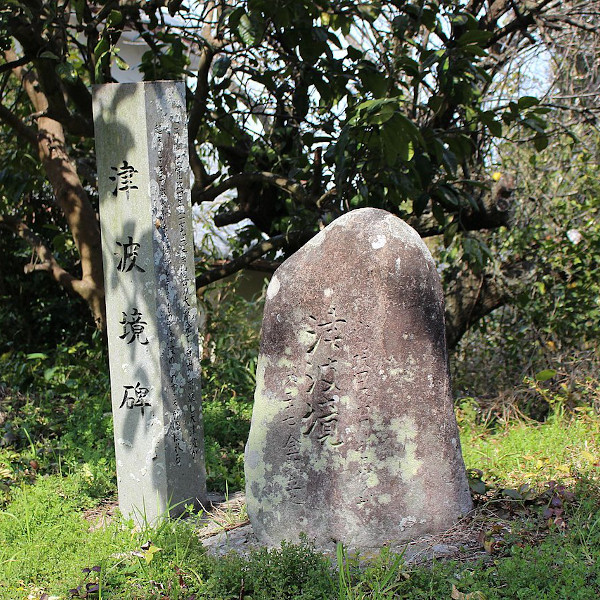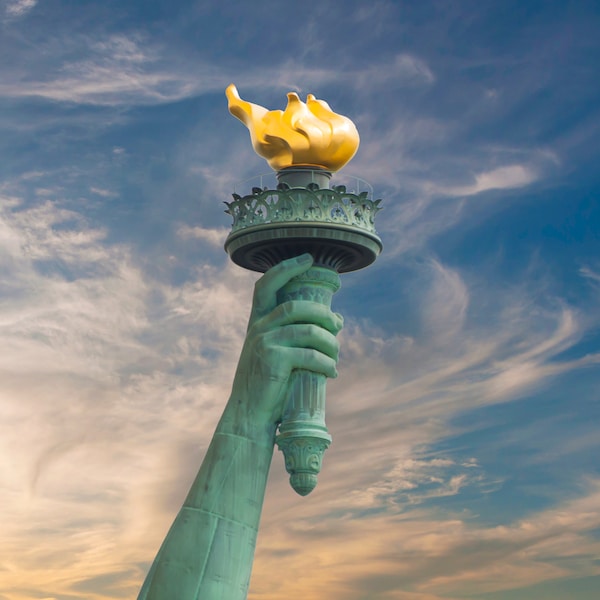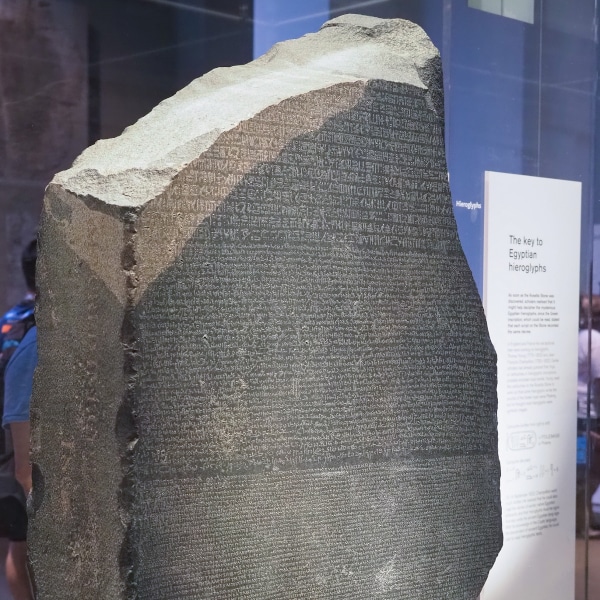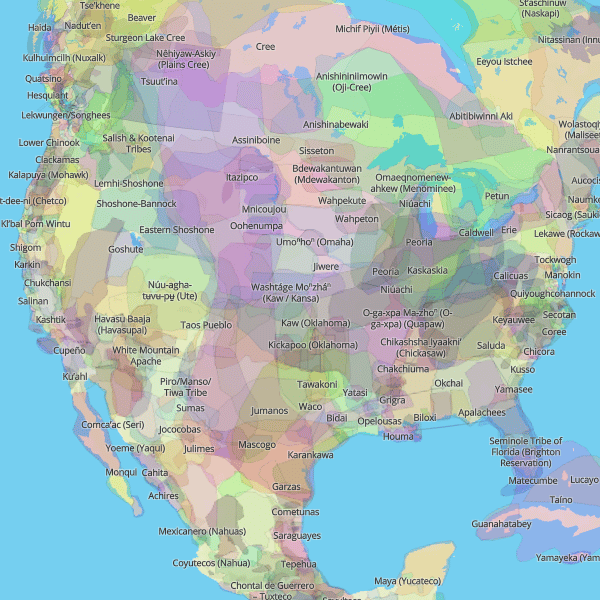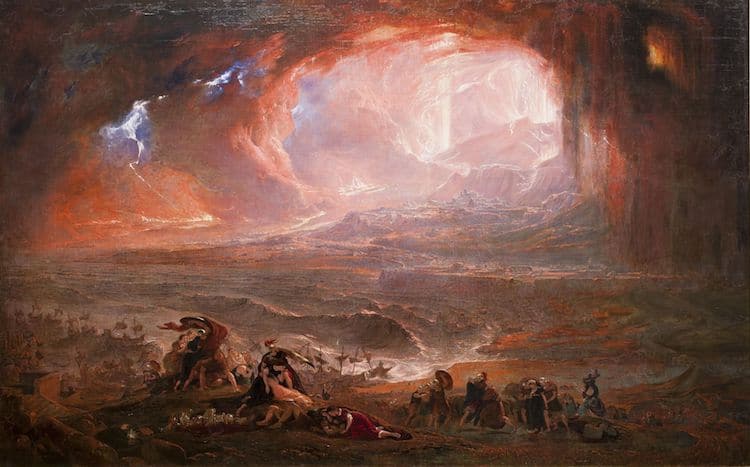
A restored version of John Martin's painting, “The Destruction of Pompeii and Herculaneum,” 1822 (Photo: Wikimedia Commons)
The devastating history of Pompeii is so bewitching that even today the name evokes an immediate emotional response. However, Pompeii wasn't the only Ancient Roman town to be preserved by Mount Vesuvius's eruption. Halfway between Naples and Pompeii lies the smaller, wealthier town of Herculaneum, which followed a slightly different fate.
In 79 CE, the peak of Mount Vesuvius exploded—sending a 10-mile cloud of ash and pumice into the stratosphere and marking the start of the cataclysmic eruption. Pompeii was immediately besieged by volcanic ash and pumice stones, but due to a westerly wind, Herculaneum was spared from the first stage of the eruption. The result is an ancient town whose ruins are better preserved, and which offers another glimpse into Ancient Roman life.
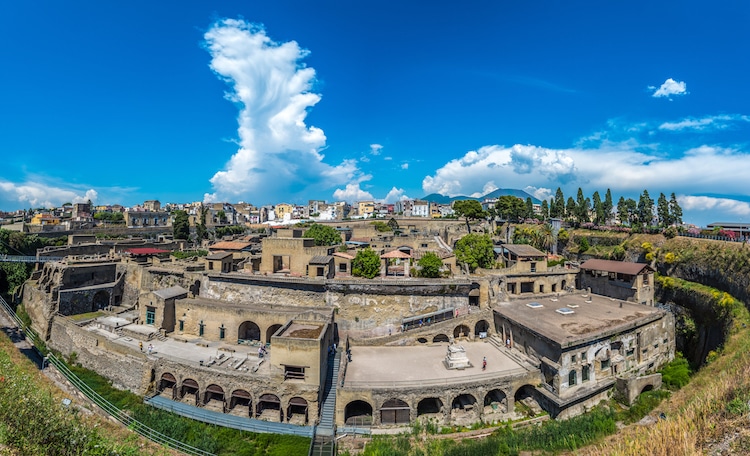
Photo: Stock Photos from javarman/Shutterstock
Herculaneum in Ancient Rome
According to ancient tradition, Herculaneum's name—based off of the Greek hero Heracles (or Hercules)—suggests that it was of Greek origin. However, like its sister Pompeii, the two settlements passed through a parade of different powers, including the Osci people of central Italy, the Etruscans, and the Samnites, until both finally converted to Roman rule at the culmination of the Social War in 89 BCE.
Before the eruption, the towns surrounding the base of Mount Vesuvius were thriving Roman settlements. Pompeii was formerly a town of 20,000, including numerous merchants and manufacturers who benefited from the proximity to the Mediterranean basin and Roman roads. Outside the city center, Pompeii also had successful vineyards and orchards, which benefited from the rich soil near the volcano.
By contrast, its sister city Herculaneum was less a place of commerce and more a place of leisure. Its population was smaller at about 5,000 inhabitants, but it expanded in the summertime when wealthy Roman families retreated to their seaside villas. Herculaneum's remaining architecture includes all of the hallmarks of prosperous Roman settlements: opulent villas, a complex water system to supply water to the community, and luxurious public bath houses.
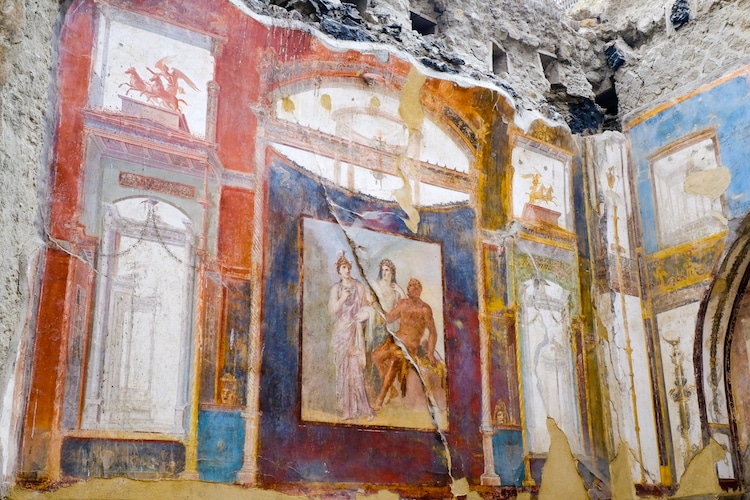
Photo: Stock Photos from JethroT/Shutterstock
The Eruption
According to records, the area surrounding Mount Vesuvius was shaken by a chain of small earthquakes directly leading up to the volcanic eruption. However, the inhabitants had already acclimatized to random seismic activity—and there had been no indication that the ancient Romans even knew Mount Vesuvius was a volcano.
On August 24, 79 CE, just after noon, no one at the time could have predicted the catastrophe that took place. The peak of Mount Vesuvius exploded and sent a mushroom cloud of ash and pumice stone into the sky. Pliny the Younger wrote in a letter to historian Tacitus: “A dark and horrible cloud charged with combustible matter suddenly broke and set forth. Some bewailed their own fate. Others prayed to die.”
Pompeii and its inhabitants were immediately pummeled by debris. Those who were able fled Pompeii in terror, but some 2,000 people stayed in the town—hoping to wait out the eruption.
Due to a westerly wind, Herculaneum was spared the first stage of the eruption, allowing precious time for inhabitants to flee and minimizing the damage to the town's infrastructure. Eventually however, Herculaneum and Pompeii succumbed to the same cloud of ash that buried everything and everyone in its path. Except…
The ash that covered Herculaneum carbonized, thereby preserving the wood of roofs, beds, and doors, as well as keeping organic material like food.
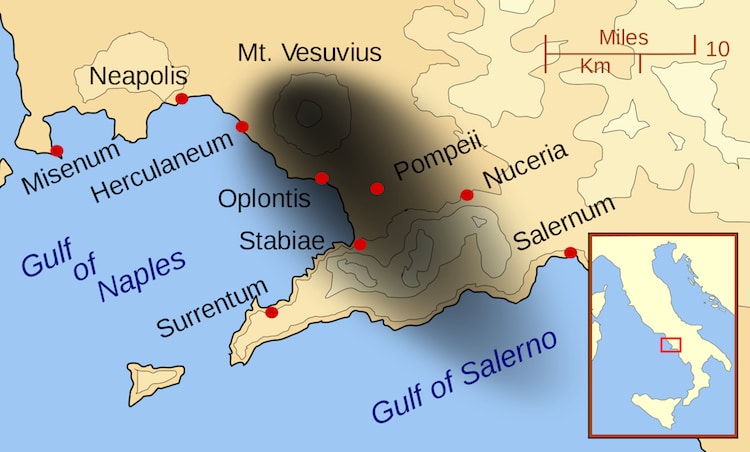
The black cloud represents the general distribution of ash and cinder to the affected cities near Mount Vesuvius (Photo: Wikimedia Commons)
The Aftermath
For centuries after the cataclysmic event, the towns of Herculaneum and Pompeii lay dormant under ash and forgotten by history. It wasn't until 1738 that Herculaneum was properly excavated by a Spanish engineer under patronage of the King of the Two Sicilies. When Pompeii was discovered ten years later, however, excavation of Herculaneum ceased, as the site of Pompeii was much easier to uncover due to the thinner layers of debris—4 meters (13 feet) as opposed to Herculaneum's 20 meters (65 feet).
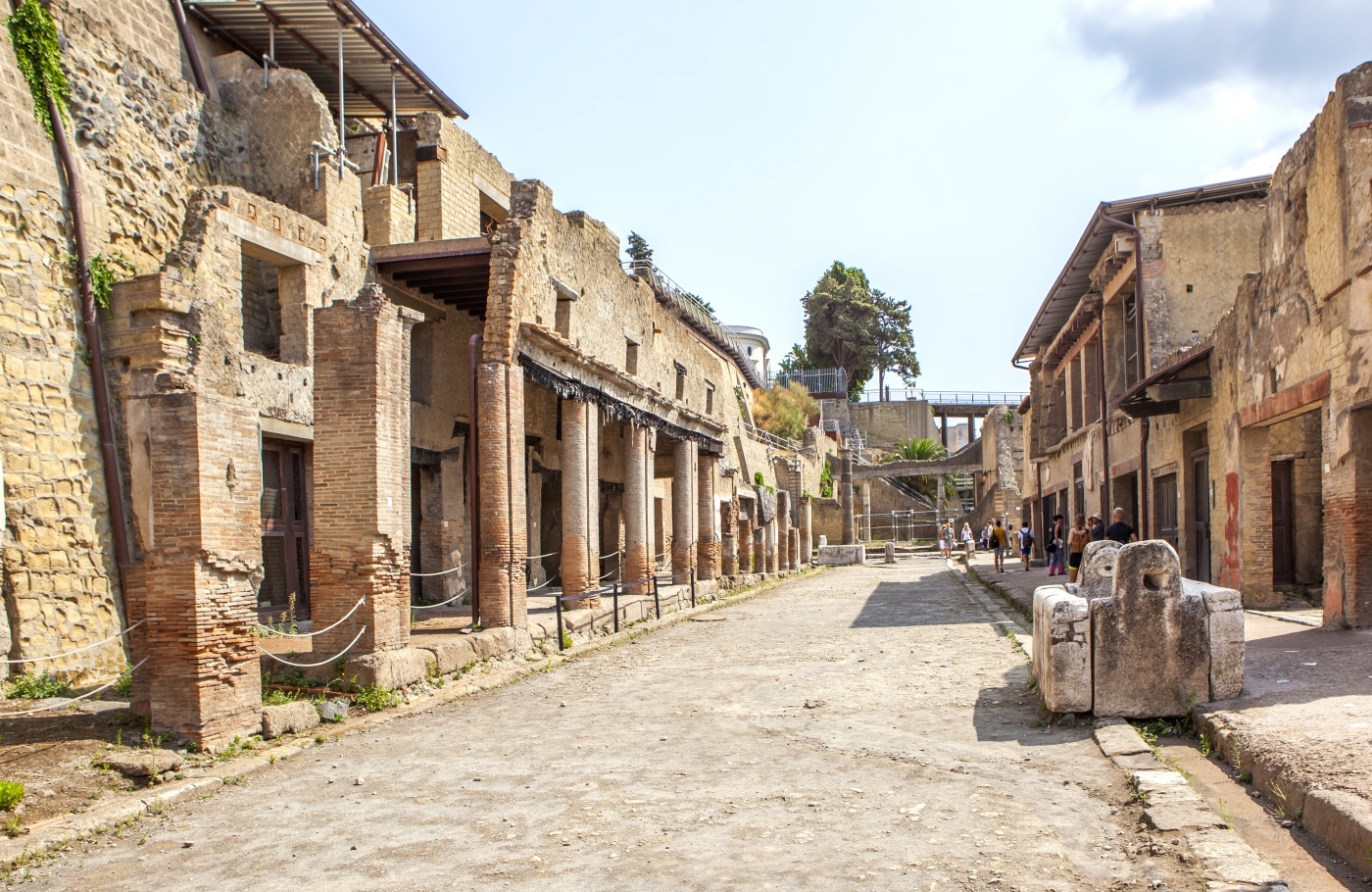
Photo: Stock Photos from Sergei Afanasev/Shutterstock
As time went on, both sites slowly became unearthed and archeologists realized the amazing extent to which these Roman towns were preserved. For the first time, people saw entire buildings, everyday objects, and frescoes from ancient Roman times. Not only that, in 1863, archeologist Giuseppe Fiorelle discovered human-shaped voids that had been formed in the ash of Pompeii.
Due to the nature of Herculaneum's preservation, there were no resulting casts of victims—instead, excavators found skeletons of some 400 people who perished near the seawall.
Today, only 15% of Herculaneum is uncovered and available to see, but even in this small section, visitors can see lavish Roman villas (some complete with roofs) decorated in frescoes, mosaics, and colored marble cladding. The most famous and palatial of these is the “Villa of the Papyri,” which was named after its library of over 1,800 papyrus scrolls (papyri)—all carbonized by the heat of the eruption.
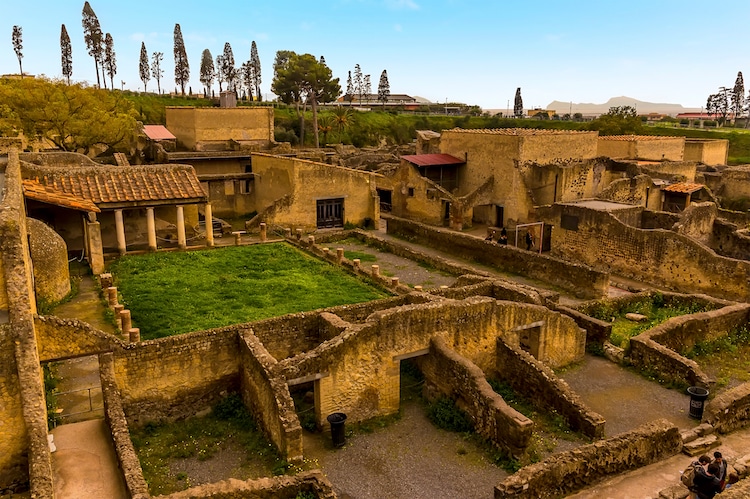
Photo: Stock Photos from Nicola Pulham/Shutterstock
Visiting Herculaneum Today
Each year, 2.5 million people visit the ruins of Pompeii, an UNESCO world heritage site, and walk the uncovered remains of the town.
Comparatively, the smaller, lesser known town of Herculaneum gets around 300,000 visitors a year, making it a hidden gem among Italy's many tourist attractions. To see an ancient Roman town of superb preservation with minimal crowd and tranquil atmosphere, Herculaneum is well worth a trip.
Related Articles:
How a Volcanic Eruption Preserved the Ancient Roman City of Pompeii
Stunning Drone Video Captures Sweeping Views of the Ancient Ruins of Pompeii






































































